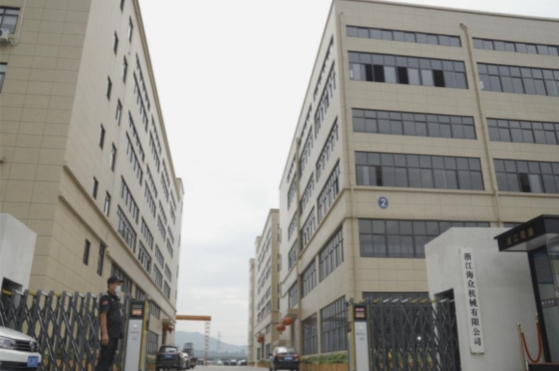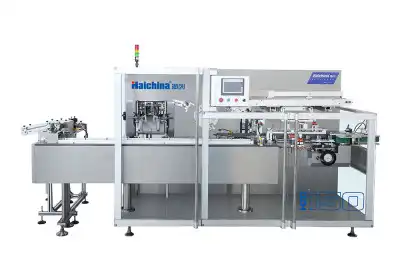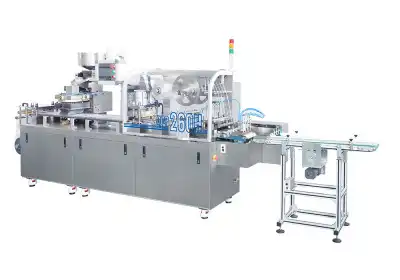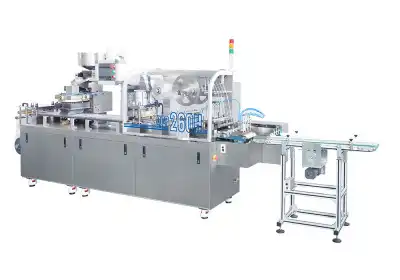Understanding the Basics of Pillow Packing Machines
What is a Pillow Packing Machine
A pillow packing machine is a specialized piece of equipment designed to package products in a pillow-shaped format. These machines are widely used across various industries, including food, pharmaceuticals, and consumer goods. The packaging process involves forming a tube of packaging material around the product, sealing it longitudinally, and then creating transverse seals to form individual "pillows" containing the product.
Key Components of Pillow Packing Machines
Regardless of whether they are automatic or semi-automatic, pillow packing machines typically consist of several core components. These include a film roll holder, a forming collar to shape the packaging material, sealing mechanisms for both longitudinal and transverse seals, a product feeding system, and a control panel. Understanding these components is crucial for appreciating the differences between automatic and semi-automatic models.
Applications Across Industries
Pillow packing machines find applications in numerous sectors. In the food industry, they're used for packaging snacks, candies, and dried goods. Pharmaceutical companies utilize them for packaging tablets, capsules, and medical supplies. Consumer goods industries employ these machines for packaging items like soap bars, sponges, and small electronics accessories. The versatility of pillow packing machines makes them an indispensable tool in modern packaging operations.
Automatic Pillow Packing Machines: A Closer Look
Advantages of Automation
Automatic pillow packing machines offer several significant advantages. They excel in high-volume production environments, capable of packaging hundreds or even thousands of units per minute with minimal human intervention. This high throughput is coupled with consistent packaging quality, as automated systems maintain precise control over variables like seal strength and package dimensions. Additionally, automation reduces labor costs and minimizes the risk of human error, leading to improved overall efficiency and product consistency.
Challenges and Considerations
While the benefits of automatic pillow packing machines are substantial, they come with certain challenges. The initial investment for an automatic system is typically higher than that of a semi-automatic machine. These systems also require more specialized maintenance and may have longer downtime in case of malfunctions. Furthermore, automatic machines are less flexible when it comes to product changeovers, which can be a drawback for operations that frequently switch between different products or packaging sizes.
Ideal Use Cases
Automatic pillow packing machines are best suited for large-scale operations with high production volumes and consistent product lines. They shine in scenarios where speed and efficiency are paramount, such as in mass-market food production or high-volume pharmaceutical packaging. Companies looking to maximize output while minimizing labor costs often find automatic systems to be the most cost-effective solution in the long run, despite the higher initial investment.
Semi-Automatic Pillow Packing Machines: Flexibility and Control
Benefits of Semi-Automation
Semi-automatic pillow packing machines offer a balance between automation and manual control. These machines typically require an operator to perform certain tasks, such as product feeding or package removal, while automating other aspects of the packaging process. This hybrid approach provides several benefits, including lower initial costs compared to fully automatic systems. Semi-automatic machines also offer greater flexibility, allowing for easier product changeovers and adjustments to packaging parameters. This makes them ideal for operations with diverse product lines or frequent changes in packaging requirements.
Operational Considerations
While semi-automatic pillow packing machines offer flexibility, they do come with some operational considerations. The reliance on human operators means that production speeds are generally lower than those of fully automatic systems. There's also a higher potential for variability in packaging quality, as some aspects of the process depend on operator skill and consistency. However, this human involvement can be advantageous in certain scenarios, such as when handling delicate products or when visual inspection of each package is necessary.
Suitable Applications
Semi-automatic pillow packing machines are well-suited for small to medium-sized operations or those with diverse product lines. They're particularly valuable in industries where product changeovers are frequent, such as contract packaging services or specialty food production. These machines also find applications in scenarios where a higher degree of manual control is desired, such as in the packaging of fragile items or in operations where each package needs to be visually inspected before sealing.
Making the Right Choice for Your Operation
Selecting between automatic and semi-automatic pillow packing machines requires careful consideration of various factors. Production volume, product diversity, available floor space, and budget all play crucial roles in this decision. Automatic machines are ideal for high-volume, consistent production lines where maximizing efficiency is key. Semi-automatic systems, on the other hand, offer more flexibility and are often more suitable for smaller operations or those with frequently changing product lines.
It's also important to consider future growth and potential changes in your packaging needs. While a semi-automatic machine might be sufficient for current operations, an automatic system could be a wise investment if you anticipate significant growth or a shift towards higher production volumes.
Ultimately, the choice between automatic and semi-automatic pillow packing machines should align with your specific operational needs, long-term business goals, and budgetary constraints. By carefully evaluating these factors and understanding the pros and cons of each option, you can make an informed decision that enhances your packaging efficiency and supports your business objectives.
Conclusion
The decision between automatic and semi-automatic pillow packing machines is not a one-size-fits-all solution. Each type offers distinct advantages and potential drawbacks that must be weighed against your specific operational needs. Automatic machines excel in high-volume, consistent production environments, offering unparalleled speed and efficiency. Semi-automatic systems provide greater flexibility and control, making them ideal for smaller operations or those with diverse product lines. By carefully considering factors such as production volume, product variety, budget, and future growth plans, you can select the pillow packing machine that best aligns with your packaging goals and overall business strategy.
FAQs
1. What is the main difference between automatic and semi-automatic pillow packing machines?
Automatic machines operate with minimal human intervention, offering higher speeds and consistency, while semi-automatic machines require some manual operation, providing more flexibility and control.
2. Which type of pillow packing machine is more cost-effective?
Semi-automatic machines typically have lower initial costs, but automatic machines may be more cost-effective in the long run for high-volume operations due to reduced labor costs and higher efficiency.
3. Can pillow packing machines handle different product sizes?
Yes, many pillow packing machines can be adjusted to handle various product sizes, with semi-automatic machines generally offering more flexibility for frequent changeovers.
Expert Pillow Packing Machine Solutions | Haichina
At Zhejiang Haizhong Machinery Co., Ltd., we offer a comprehensive range of pillow packing machines to meet diverse packaging needs. As a leading pillow packing machine manufacturer and supplier, we provide both automatic and semi-automatic solutions tailored to your specific requirements. Our machines are designed for optimal performance, incorporating advanced features for efficiency and reliability. With over 20 years of industry experience, we ensure our packaging equipment meets CE, cGMP, and ISO9001 standards. For expert guidance on selecting the ideal pillow packing machine for your operation, contact our team at [email protected].
References
Smith, J. (2022). "Advancements in Automatic Packaging Technologies." Journal of Industrial Engineering, 45(3), 78-92.
Brown, A. (2021). "Comparative Analysis of Packaging Efficiency: Automatic vs. Semi-Automatic Systems." Packaging Science Quarterly, 33(2), 112-128.
Johnson, R. et al. (2023). "Economic Implications of Automation in the Packaging Industry." International Journal of Production Economics, 215, 45-60.
Lee, S. (2022). "Flexibility and Control in Modern Packaging Systems." Advances in Manufacturing Technology, 18(4), 301-315.
Garcia, M. (2021). "Energy Efficiency in Automatic and Semi-Automatic Packaging Machines." Sustainable Production and Consumption, 27, 156-170.
Wilson, T. (2023). "Quality Assurance in Automated Packaging Processes." Quality Engineering, 35(1), 22-38.




